When you see a house with a single slanted roof that looks like a ramp, you’re looking at a skillion roof. Maybe you’re thinking about getting one for your home. Or perhaps your contractor mentioned it as an option.
You’re probably wondering: Is it worth it?
We get it. Choosing a roof is a big decision. It affects your home’s look, your wallet, and your daily life. You need honest answers, not sales pitches.
Here’s what we’ll cover: Real advantages of skillion roofs, actual drawbacks you should know, cost breakdowns, maintenance requirements, and when they work best (and when they don’t).
We’ve researched the facts, talked to contractors, and looked at real homeowner experiences. No sugar-coating. No hidden agenda.
By the end, you’ll know if a skillion roof fits your home, budget, and lifestyle. Let’s break down everything you need to make a smart choice.
What is Skillion Roofs?
A skillion roof features a single flat plane that slopes in one direction, creating a distinctive angular profile. Unlike traditional gabled or hip roofs, which have multiple slopes meeting at a peak.
The skillion design maintains a continuous slope from one end of the building to the other. This creates a streamlined appearance that complements contemporary architectural styles.
The roof typically connects a higher wall to a lower wall, with the slope angle varying based on design preferences, climate considerations, and local building codes. Most skillion roofs feature slopes between 10 and 30 degrees, though steeper angles are possible depending on the specific application.
Major Advantages of Skillion Roofs
Let’s start with the good stuff. Skillion roofs have some real benefits that can make your life easier and your wallet happier.
Cost-Effectiveness and Construction Benefits
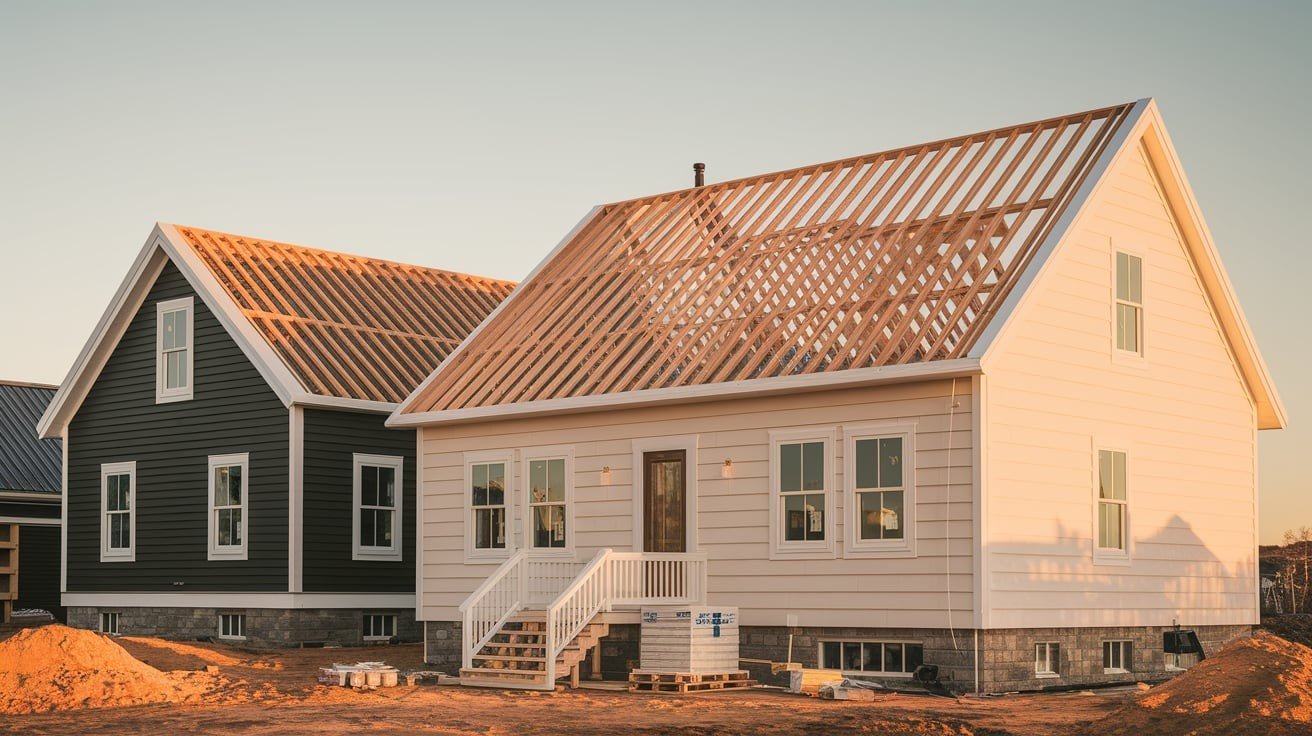
Here’s the truth: Skillion roofs are cheaper to build than most other roof types.
Why? Simple math. You need fewer materials. A traditional gabled roof has two sides, plus all the complex framing where they meet. A skillion roof? Just one flat surface.
Installation is faster, too. My contractor friend says he can finish a skillion roof in half the time it takes for a gabled roof. Fewer cuts. Fewer angles.Fewer headaches.
What does this mean for you? Lower material costs, reduced labor expenses, shorter construction timeline, and less disruption to your daily life.
But wait. There’s more to consider than just upfront savings.
Superior Water Management
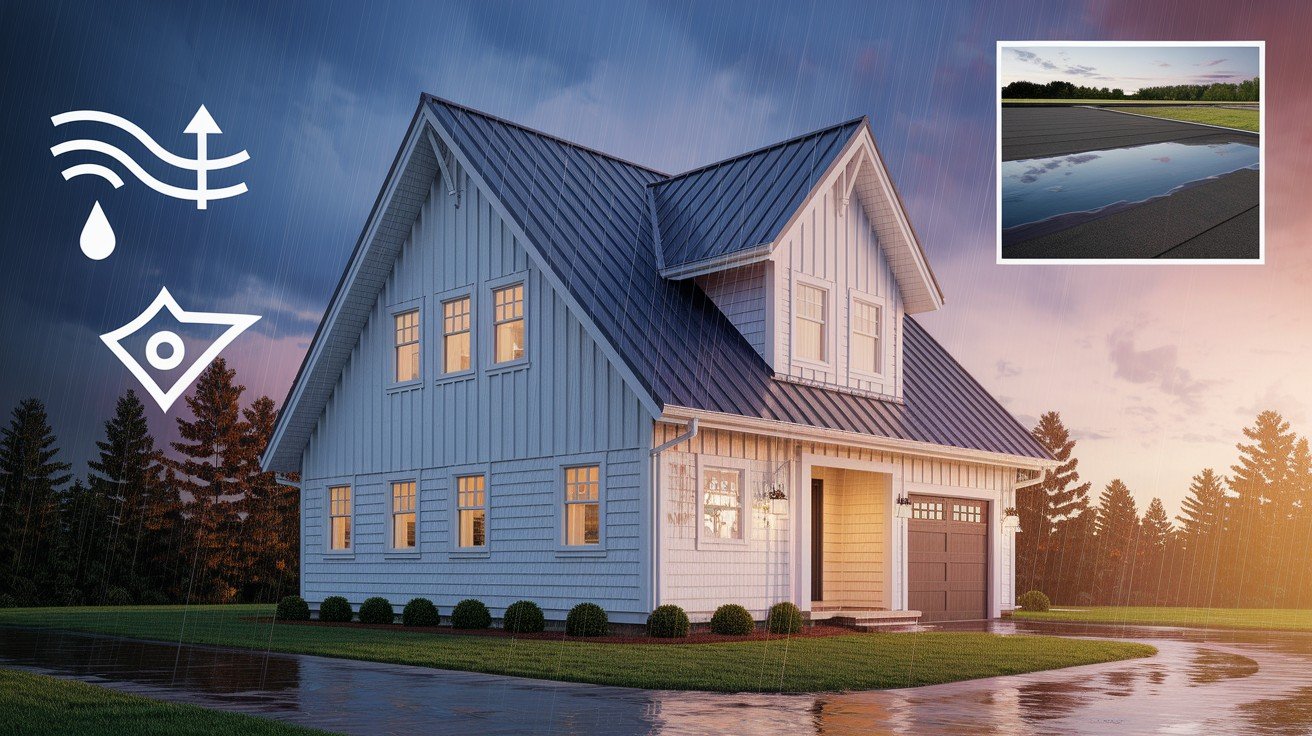
Rain is your roof’s biggest enemy. Skillion roofs handle it better than almost any other design.
The steep slope works like magic. Water runs off fast. No sitting around. No pooling. No chance to find tiny cracks and sneak inside your home.
I’ve seen flat roofs with puddles sitting for days after a storm. Not good. That standing water eventually finds its way through. Skillion roofs? The water is gone before you finish your morning coffee.
This means fewer leaks over time, less water damage, lower repair bills, and better protection in heavy rain areas.
Living in Seattle or Miami? This benefit alone might make a skillion roof worth it.
Design Flexibility and Modern Appeal
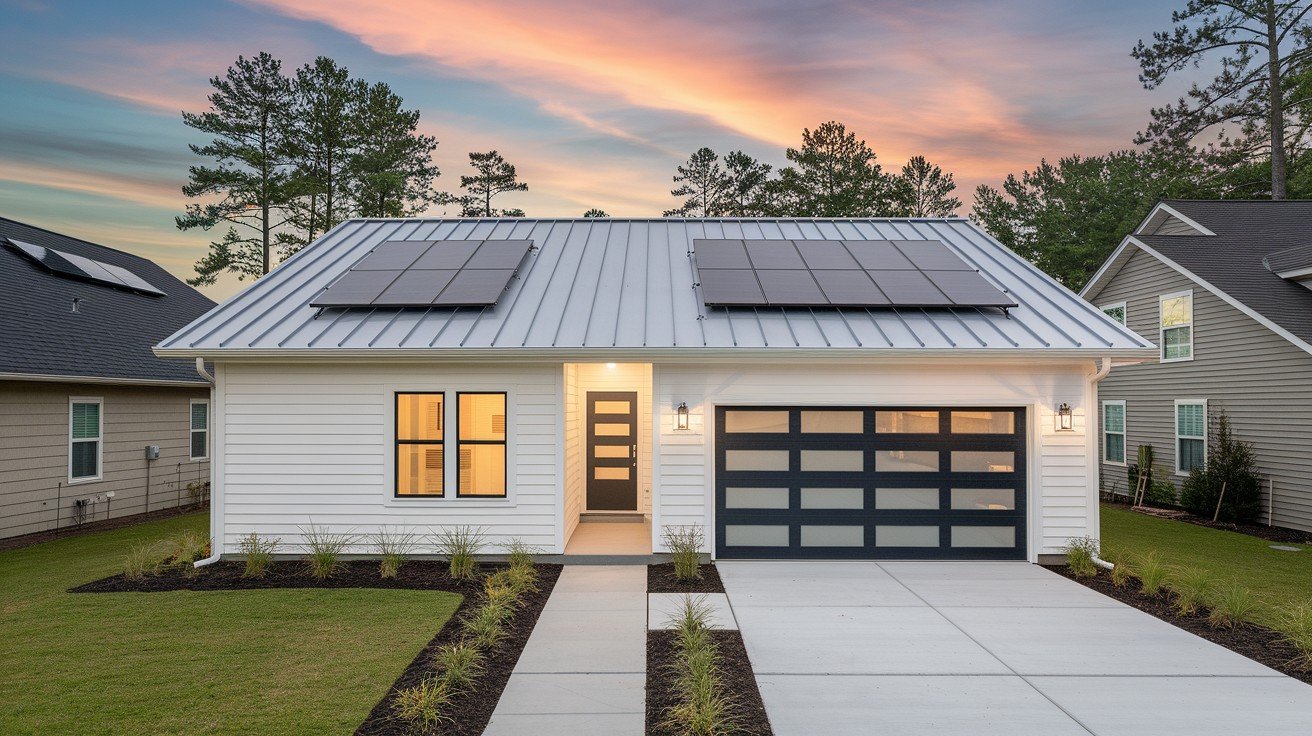
Your roof doesn’t have to be boring. Skillion roofs give you options that traditional roofs can’t match.
You can choose your slope. Want something dramatic? Go with a 9/12 pitch. Prefer subtle? Try a 3/12. It’s your call.
Solar panels love skillion roofs. That big, flat surface pointing toward the sun? Perfect for maximum energy production. I’ve seen homeowners cut their electric bills by 80% with the right setup.
Skylights are easier, too. No complex angles to work around. Just cut a hole and install. More natural light means less need for electric lighting during the day.
The look? Clean. Modern. Different. Your neighbors will notice.
Privacy and Space Optimization
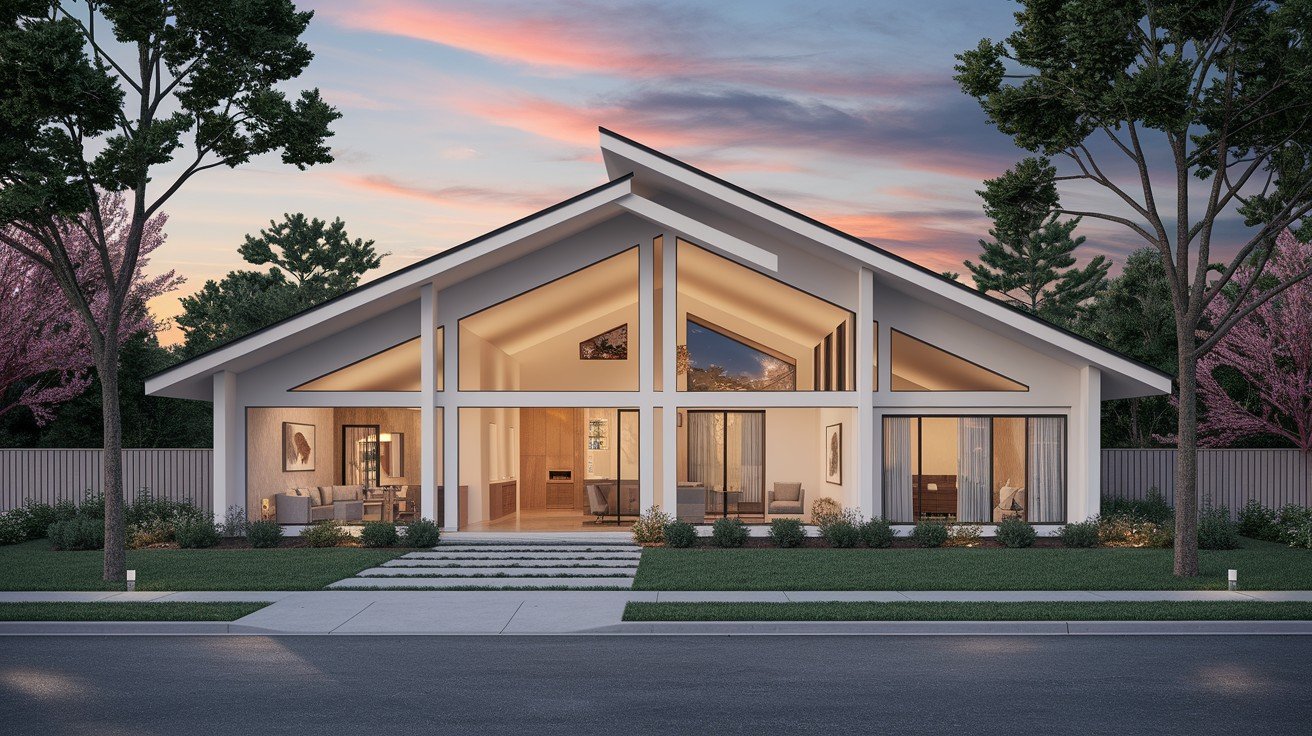
Here’s something most people don’t consider: Skillion roofs can make your home more private.
How? Position the low side toward the street. Now that the high side blocks views into your backyard and upper windows. Smart, right?
Inside your home, vaulted ceilings make rooms feel huge. That sloped roof becomes a design feature instead of just weather protection.
Consider this. Most homes have flat ceilings that waste all that space above. Skillion roofs turn that wasted space into living space.
Significant Disadvantages of Skillion Roofs
Now for the not-so-fun part. Skillion roofs aren’t perfect. Let me be honest about the problems you might face.
Material and Installation Limitations
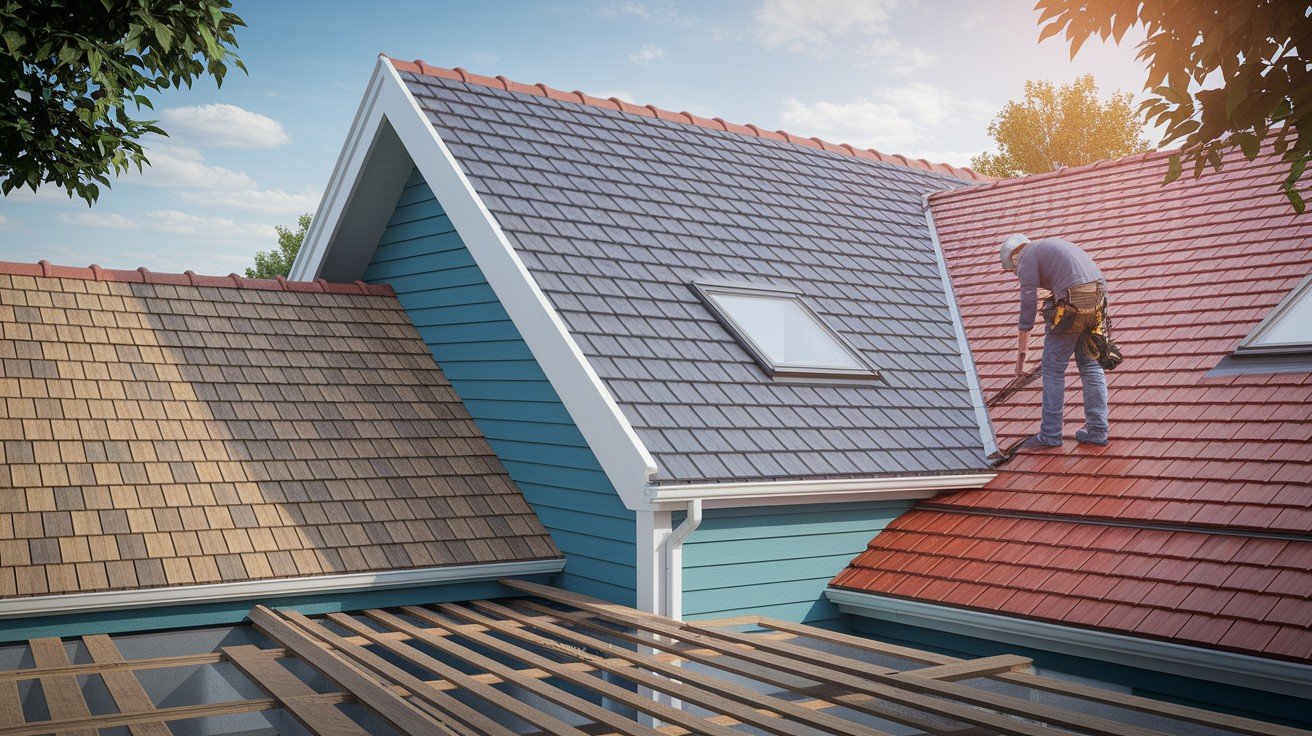
Here’s where things get tricky. You can’t use just any roofing material on a skillion roof.
Low slopes are picky. If your pitch is between 3/12 and 4/12, you’re stuck with metal or rubber roofing. No choice. Regular asphalt shingles will leak.
Want shingles? You need at least a 4/12 pitch. Want clay tiles? Same rule. No exceptions.
Finding contractors can be tough. Not every roofer knows how to handle the special requirements. Limited options often mean higher prices.
Complex designs cost more. That butterfly or split skillion roof you saw online? Beautiful, yes. Cheap, no.
Weather Vulnerability and Structural Concerns

Strong winds hate skillion roofs. Hate them.
Consider this. That big, flat surface acts like a sail in heavy wind. Hurricane coming? Your skillion roof will feel every bit of it.
You’ll need extra support. Hurricane straps. Additional bracing. More money for installation. More complexity for your contractor.
Storm-prone areas? Consider twice. I’ve seen skillion roofs get damaged when traditional roofs nearby stayed fine.
Multiple skillion designs help with wind resistance, but they cost more and are harder to install.
Maintenance and Drainage Challenges
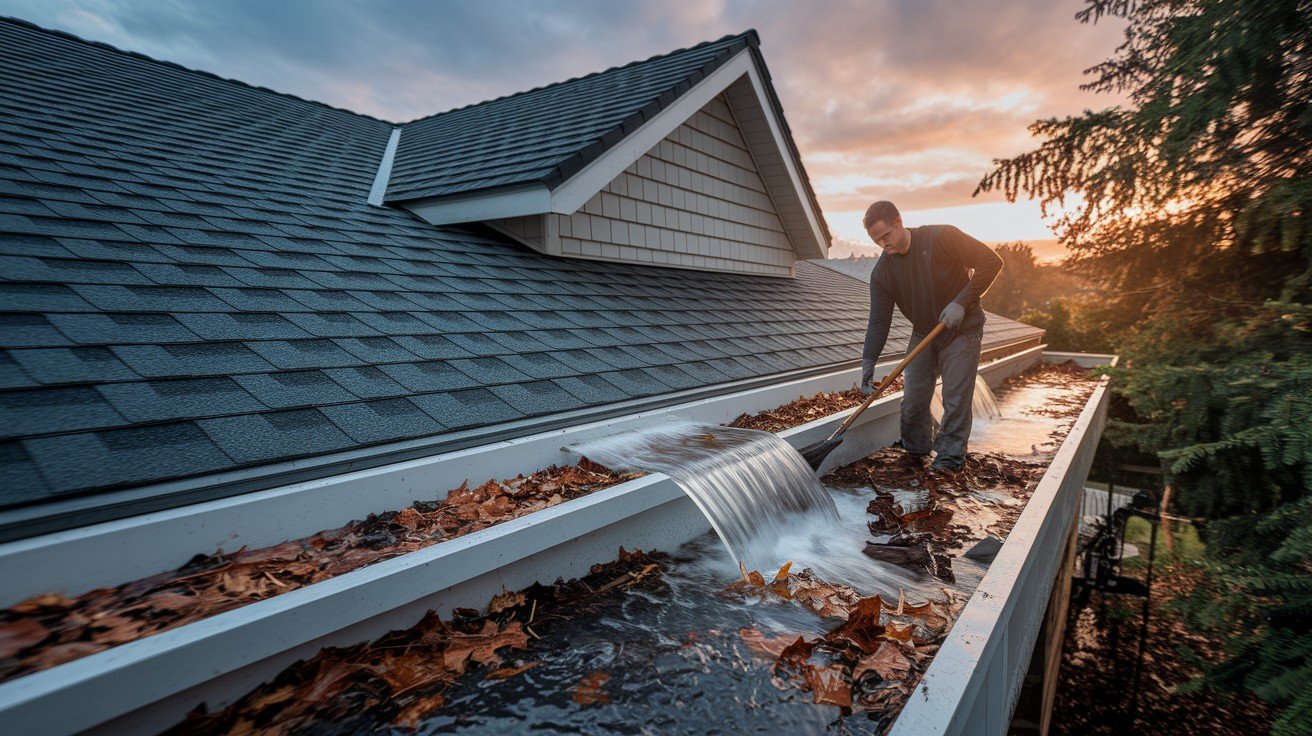
Remember that great drainage I mentioned? It comes with a catch.
All that water flows to one spot. Regular gutters can’t handle it. You need box gutters – wider, stronger, and more expensive.
More water means more debris. Leaves, twigs, and dirt all flow to the same place. Your gutters will clog faster than normal ones.
How much faster? Plan on cleaning them twice as often. Maybe more if you have lots of trees nearby.
Skip the maintenance? Bad idea. Clogged box gutters can cause serious water damage. Fast.
Space and Storage Limitations
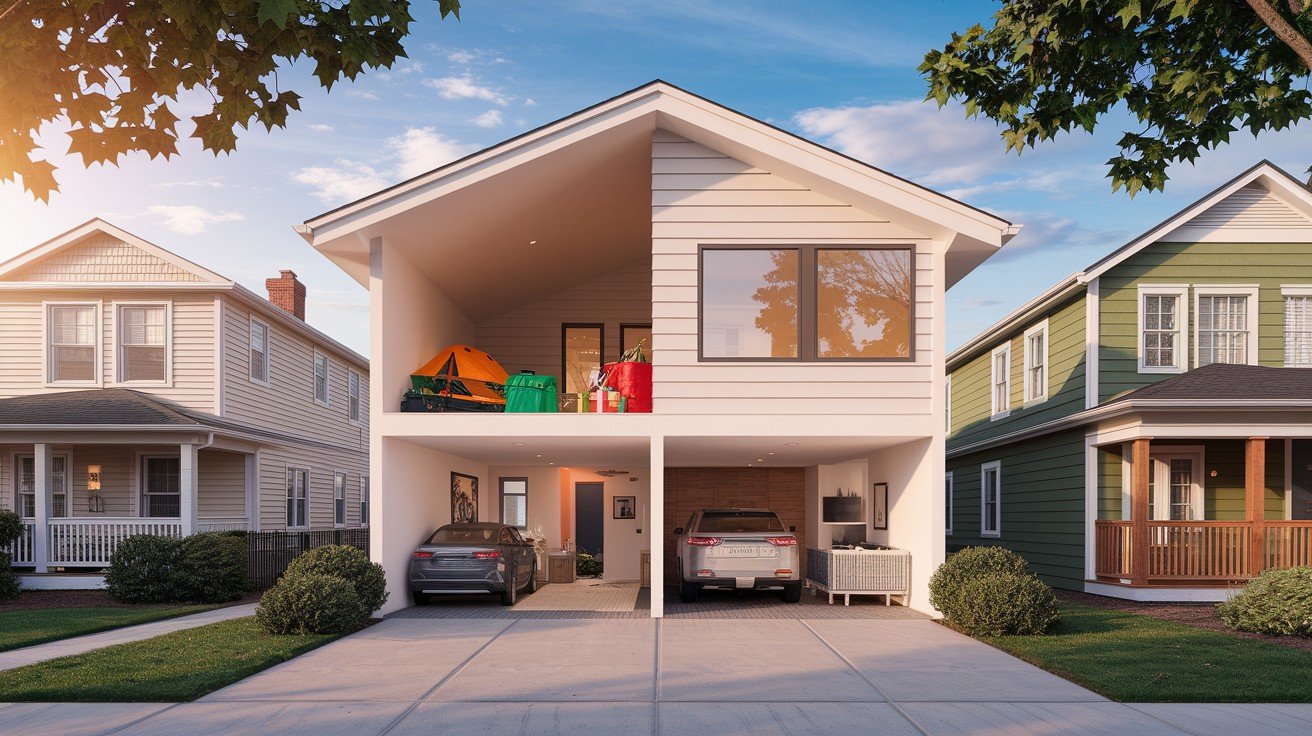
Here’s the big one: No attic.
Traditional roofs give you attic space. Skillion roofs don’t. That’s it. Game over for attic storage.
Where do you put holiday decorations? Camping gear? Old furniture? You’ll need to find somewhere else.
Planning to sell? Some buyers won’t like this. They want that attic space. Your pool of potential buyers shrinks.
You can get creative with partial lofts or built-in storage, but it costs extra, and you’ll never match traditional attic space.
Cost Analysis: Investment vs. Long-term Value
Let’s talk money. Real numbers. Real costs.
Upfront, you’ll save. A basic skillion roof costs 15-30% less than a gabled roof. On a $15,000 roof job, that’s $2,250 to $4,500 in your pocket.
But wait. Long-term costs add up.
Those special materials cost more. Metal roofing runs $7-12 per square foot. Compare that to asphalt shingles at $3-5 per square foot.
Box gutters aren’t cheap either. Installation costs double compared to standard gutters. Maintenance costs more, too.
Solar panels? Great investment if positioned right. I’ve seen homeowners save $100-200 monthly on electric bills. Over 20 years, that’s serious money.
Resale value varies by market. Modern areas love them. Traditional neighborhoods? Not so much. Know your local market before you commit.
The bottom line? You might save upfront, but spend more later. Plan accordingly.
Conclusion
The bottom line? Skillion roofs aren’t perfect, but they might be perfect for you.
If you want modern style, better drainage, and lower upfront costs, they’re worth considering. If you need lots of storage space or live in extreme weather areas, think twice.
Remember these key points: They save money initially, but need special gutters. They look great, but limit attic space. They handle rain well but struggle with strong winds.
Our advice? Talk to a local contractor who knows your area’s weather and building codes. Get multiple quotes. Ask about long-term maintenance costs.
Don’t rush this decision. Your roof will be there for decades. Take time to weigh these pros and cons against your specific needs, budget, and home style.
Choose wisely.
Frequently Asked Questions
Are skillion roofs more expensive than traditional roofs?
Initially cheaper due to simple construction, but specialized materials and gutters may increase long-term costs.
Do skillion roofs work well in areas with heavy snow?
Steep pitch helps snow slide off, but structural support must be adequate for snow loads.
Can I add solar panels to any skillion roof?
Yes, but optimal positioning and roof pitch are crucial for maximum solar panel efficiency and performance.
How long do skillion roofs typically last?
With quality materials and proper maintenance, skillion roofs can last 20-50 years depending on the climate.
Do skillion roofs require special building permits?
Standard permits are usually sufficient, but complex designs may need additional structural engineering approval and documentation.

